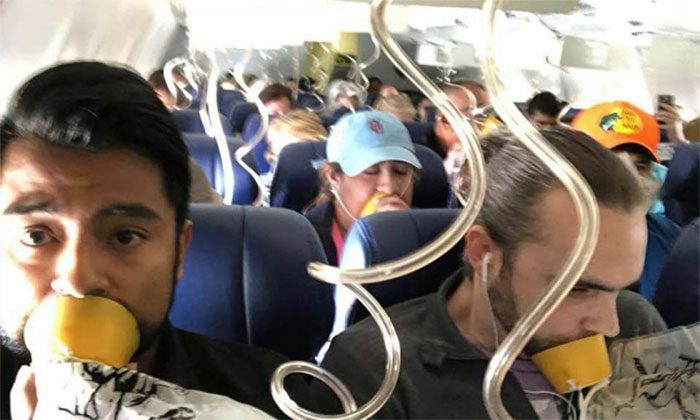Why do airplane oxygen masks only provide enough oxygen for 15 minutes? Many people worry if that short amount of time is sufficient to ensure passenger safety.
On every flight, before takeoff, flight attendants always instruct passengers on how to use oxygen masks. This safety equipment is usually stored above each passenger’s seat and automatically deploys when there is a sudden change in cabin pressure.
Even though air travel is one of the safest forms of transportation, many people still feel anxious when considering the situations in which they might need to use an oxygen mask. They wonder if the amount of oxygen provided will be enough to sustain their lives and how long the masks will last.
In reality, oxygen masks on airplanes provide enough oxygen for an individual for approximately 12-20 minutes, with an average of about 15 minutes. This figure may cause some anxiety. However, experts assure us that this time is sufficient for pilots to bring the aircraft to a safe altitude where passengers no longer need to use the masks.
Therefore, you shouldn’t be overly concerned about how long the oxygen mask will provide oxygen; the important thing is how to react when you need to use it: You must act quickly when the mask drops down in front of you. You could be in danger if you do not have oxygen to breathe within 30 seconds. Aviation experts state that in an oxygen-deprived cabin, passengers may experience headaches, dizziness, and risk losing consciousness, which is why it is crucial to put on the mask promptly.
Another key point to remember is that you must remain calm and focus on putting on your oxygen mask first before assisting others, even family members. You need to be alert and fit to help others effectively. Typically, there is an extra mask provided for every row of seats, meaning that a three-seat row will have four oxygen masks available.
Passengers do not need to wear the oxygen masks for the entirety of the flight. Once the aircraft descends to a safe altitude, the crew will announce that it is safe to remove the masks, and you can take them off.

Passengers wearing oxygen masks during an emergency.
One interesting fact about airplane oxygen masks that very few people know is that they are not connected to an oxygen tank or any other gas supply as most of us might assume. Instead, they are connected to a chemical compound that generates oxygen through combustion. This is typically a mixture of barium peroxide (BaO2), sodium chlorate (NaClO3), and potassium chlorate (KClO3). Flight attendants often emphasize that you must pull the mask down firmly when putting it on, as this action triggers the chemical reaction that burns the mixture to produce breathable oxygen. Once the oxygen mask is activated, the chemical reaction will continue until the entire compound is consumed. This process lasts from 12 to 20 minutes, as mentioned earlier.
Why do oxygen masks provide oxygen in this way? This is a clever solution to ensure that the oxygen supply system can operate independently even if other components of the aircraft fail. Storing oxygen in tanks would be very dangerous due to the risk of explosion, which not only could injure passengers and damage the aircraft, but more critically, would leave both passengers and crew without any other source of oxygen for breathing.


















































